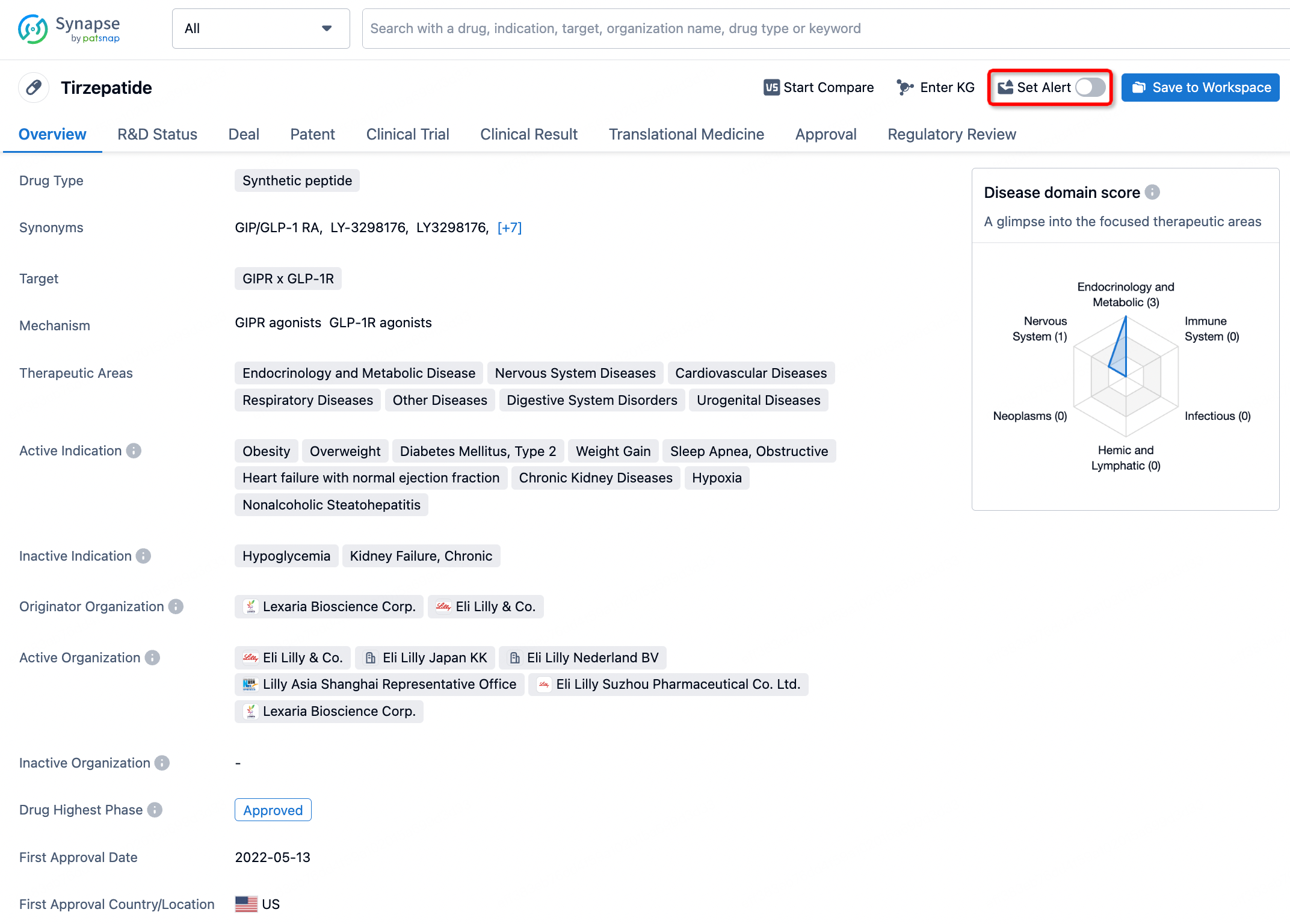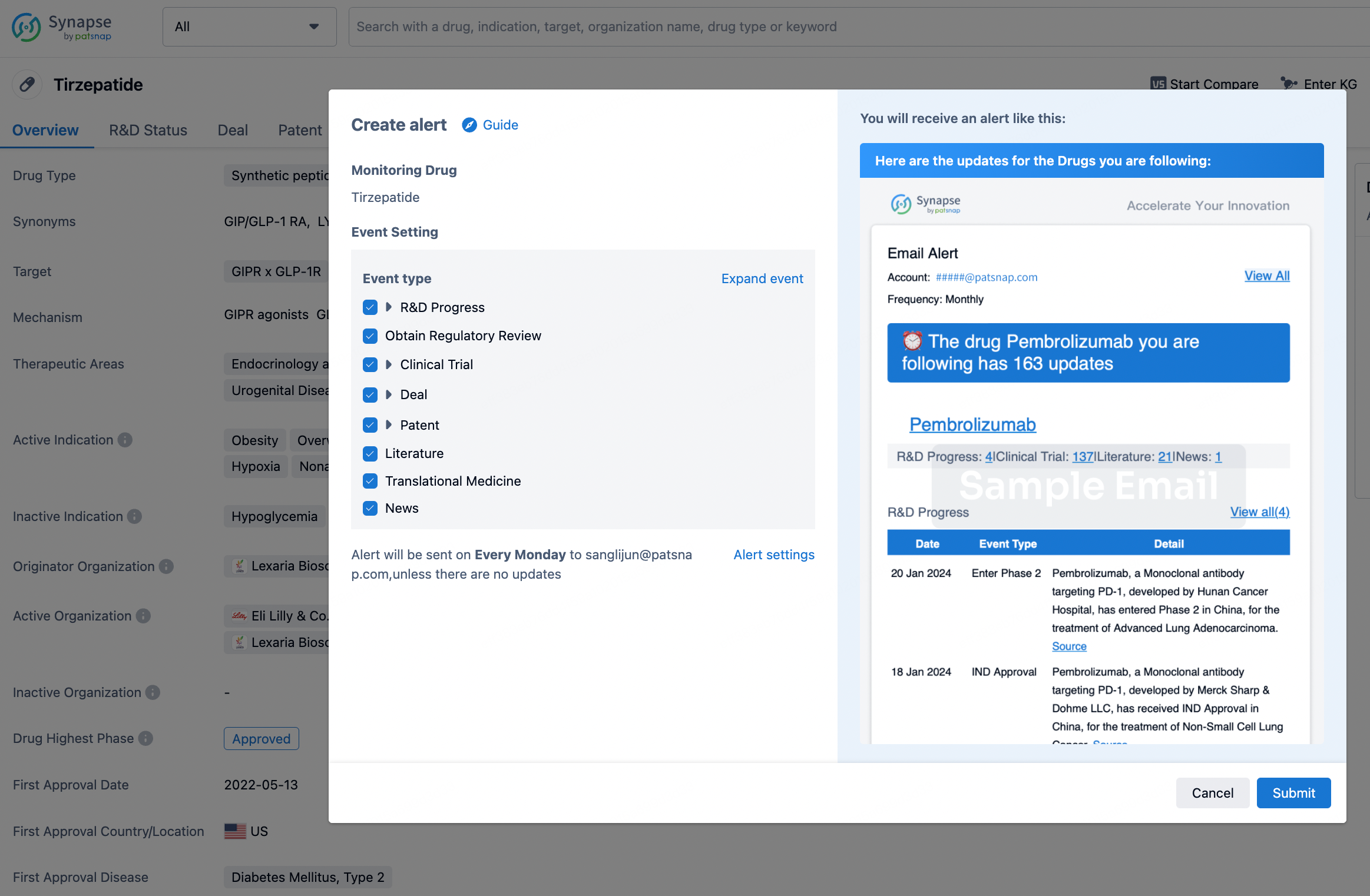Request Demo
What is the mechanism of Citalopram?
17 July 2024
Citalopram, commonly known by its brand name Celexa, is a widely prescribed antidepressant belonging to the class of selective serotonin reuptake inhibitors (SSRIs). This class of drugs is primarily used to treat major depressive disorder and various anxiety disorders. Understanding the mechanism of citalopram involves delving into its effects on neurotransmitter activity in the brain, particularly serotonin.
Serotonin, a neurotransmitter, plays a crucial role in regulating mood, emotion, and anxiety. Imbalances in serotonin levels are often associated with depression and other mood disorders. Citalopram works by inhibiting the reuptake of serotonin into the presynaptic neuron, thereby increasing the availability of serotonin in the synaptic cleft, the space between neurons. This increased availability enhances serotonergic neurotransmission, which is believed to contribute to the alleviation of depressive symptoms.
The process begins when serotonin is released from the presynaptic neuron into the synaptic cleft. Normally, serotonin would bind to its receptors on the postsynaptic neuron, transmitting the signal that modulates various brain functions. After this transmission, serotonin is typically reabsorbed by the presynaptic neuron through the serotonin transporter (SERT). Citalopram exerts its effect by binding to SERT, blocking the reabsorption (or reuptake) of serotonin. This blockade results in an increased concentration of serotonin in the synaptic cleft, prolonging its action on the postsynaptic receptors.
It's essential to note that the therapeutic effects of citalopram are not immediate. While the reuptake inhibition occurs rapidly, clinical improvements in mood and anxiety symptoms usually take several weeks to manifest. This delay is thought to be due to the time required for downstream neuroadaptive changes, such as receptor sensitivity adjustments and alterations in gene expression, which contribute to the long-term benefits of increased serotonergic activity.
Citalopram's mechanism of action extends beyond simple serotonin reuptake inhibition. Research indicates that chronic administration of citalopram may lead to neuroplastic changes, including increased neurogenesis (the formation of new neurons) in the hippocampus, a brain region critical for mood regulation and cognitive function. These neuroplastic changes may further support the drug's antidepressant effects.
Additionally, citalopram is known for its high selectivity for the serotonin transporter, which minimizes its interaction with other neurotransmitter systems. This selectivity often translates to a more favorable side effect profile compared to older antidepressants, such as tricyclic antidepressants and monoamine oxidase inhibitors, which interact with multiple neurotransmitter systems and are associated with a higher incidence of adverse effects.
Despite its efficacy, citalopram is not without potential side effects. Commonly reported side effects include nausea, dry mouth, drowsiness, insomnia, and sexual dysfunction. Most side effects are mild and tend to diminish with ongoing treatment. However, it is crucial for individuals to be monitored by healthcare providers, especially during the initial phases of treatment, to manage any adverse effects and adjust dosages as necessary.
In conclusion, citalopram functions primarily by inhibiting the reuptake of serotonin, leading to increased serotonin levels in the brain and subsequent improvements in mood and anxiety symptoms. Its high selectivity for the serotonin transporter and its potential to induce neuroplastic changes make it a valuable option in the treatment of depression and anxiety disorders. As with all medications, a comprehensive understanding of its mechanism and careful monitoring by healthcare professionals are essential to maximize its therapeutic benefits while minimizing potential risks.
Serotonin, a neurotransmitter, plays a crucial role in regulating mood, emotion, and anxiety. Imbalances in serotonin levels are often associated with depression and other mood disorders. Citalopram works by inhibiting the reuptake of serotonin into the presynaptic neuron, thereby increasing the availability of serotonin in the synaptic cleft, the space between neurons. This increased availability enhances serotonergic neurotransmission, which is believed to contribute to the alleviation of depressive symptoms.
The process begins when serotonin is released from the presynaptic neuron into the synaptic cleft. Normally, serotonin would bind to its receptors on the postsynaptic neuron, transmitting the signal that modulates various brain functions. After this transmission, serotonin is typically reabsorbed by the presynaptic neuron through the serotonin transporter (SERT). Citalopram exerts its effect by binding to SERT, blocking the reabsorption (or reuptake) of serotonin. This blockade results in an increased concentration of serotonin in the synaptic cleft, prolonging its action on the postsynaptic receptors.
It's essential to note that the therapeutic effects of citalopram are not immediate. While the reuptake inhibition occurs rapidly, clinical improvements in mood and anxiety symptoms usually take several weeks to manifest. This delay is thought to be due to the time required for downstream neuroadaptive changes, such as receptor sensitivity adjustments and alterations in gene expression, which contribute to the long-term benefits of increased serotonergic activity.
Citalopram's mechanism of action extends beyond simple serotonin reuptake inhibition. Research indicates that chronic administration of citalopram may lead to neuroplastic changes, including increased neurogenesis (the formation of new neurons) in the hippocampus, a brain region critical for mood regulation and cognitive function. These neuroplastic changes may further support the drug's antidepressant effects.
Additionally, citalopram is known for its high selectivity for the serotonin transporter, which minimizes its interaction with other neurotransmitter systems. This selectivity often translates to a more favorable side effect profile compared to older antidepressants, such as tricyclic antidepressants and monoamine oxidase inhibitors, which interact with multiple neurotransmitter systems and are associated with a higher incidence of adverse effects.
Despite its efficacy, citalopram is not without potential side effects. Commonly reported side effects include nausea, dry mouth, drowsiness, insomnia, and sexual dysfunction. Most side effects are mild and tend to diminish with ongoing treatment. However, it is crucial for individuals to be monitored by healthcare providers, especially during the initial phases of treatment, to manage any adverse effects and adjust dosages as necessary.
In conclusion, citalopram functions primarily by inhibiting the reuptake of serotonin, leading to increased serotonin levels in the brain and subsequent improvements in mood and anxiety symptoms. Its high selectivity for the serotonin transporter and its potential to induce neuroplastic changes make it a valuable option in the treatment of depression and anxiety disorders. As with all medications, a comprehensive understanding of its mechanism and careful monitoring by healthcare professionals are essential to maximize its therapeutic benefits while minimizing potential risks.
How to obtain the latest development progress of all drugs?
In the Synapse database, you can stay updated on the latest research and development advances of all drugs. This service is accessible anytime and anywhere, with updates available daily or weekly. Use the "Set Alert" function to stay informed. Click on the image below to embark on a brand new journey of drug discovery!
AI Agents Built for Biopharma Breakthroughs
Accelerate discovery. Empower decisions. Transform outcomes.
Get started for free today!
Accelerate Strategic R&D decision making with Synapse, PatSnap’s AI-powered Connected Innovation Intelligence Platform Built for Life Sciences Professionals.
Start your data trial now!
Synapse data is also accessible to external entities via APIs or data packages. Empower better decisions with the latest in pharmaceutical intelligence.


